Look, match and read.
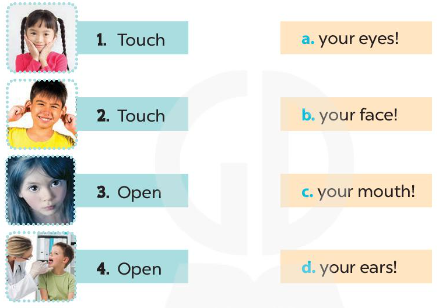
Look at the photos. Then read the article. Which photo(s) match(es) each decade?
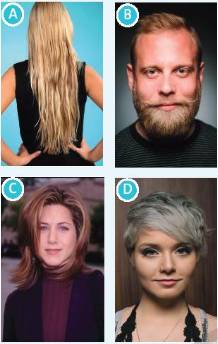
Hair through the decades
Like fashion trends, hairstyles come and go. Here’s a look at hair crazes over the past thirty years.
1990s - The ‘Rachel’
This hairstyle was named after Rachel Green, a character from the 1990s American sitcom Friends. The actress Jennifer Aniston, who played Rachel in the show, used to have medium-length hair that was cut in layers at the bottom.
2000s - Extensions
The craze for very long, straight hair in the first decade of the 21st century made hair extensions extremely popular.
2010s - Grey hair
This decade introduced a strange new fashion of young women with grey hair. Not natural grey hair, but a dye to change the colour to silver grey.
The beard and the moustache
OK, so they’re not really hairstyles, but the long beard and curly moustache will be remembered as the look of the 2010s. They were so popular that images of moustaches even decorated blouses, hats and all sorts of clothes
1990s - Photo C
2000s - Photo A
2010s - Photo B and D
$HaNa$
IX. Read and match each sentence in column A with one suitable notice in column B: (Ket yellow)
Column A Column B
46. You can get out from here A. Look both ways
47. People can go here all night B. Hospital Please be quiet.
47. You should keep this in a cool place C. Chemist’s – closed for lunch.
49. You shouldn’t talk loudly here D. EXIT
50. Be careful when you cross the road E. OPEN 24 HOURS
F. Store in fridge after opening
G. Restaurant opens at 11a.m
1. …….2……….3………4……….5……….
46. You can get out from here/D
47. People can go here all night/E
47. You should keep this in a cool place/F
49. You shouldn't talk loudly here/B
50. Be careful when you cross the road/A
Look and match.
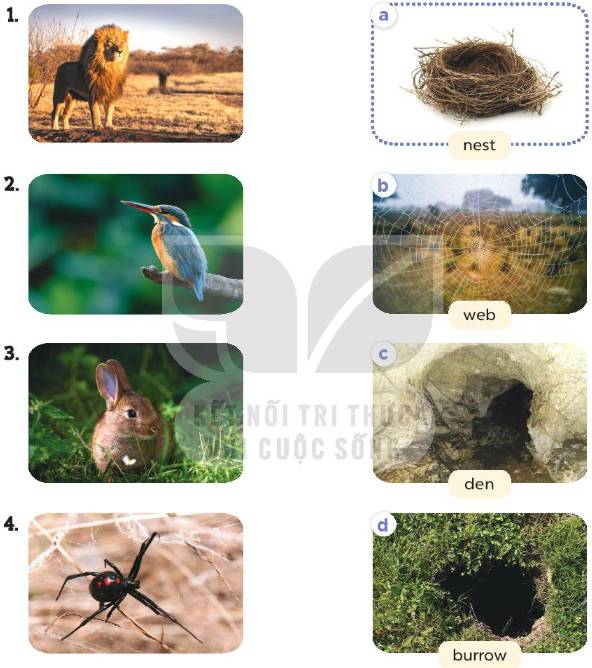
Look, match, and say.
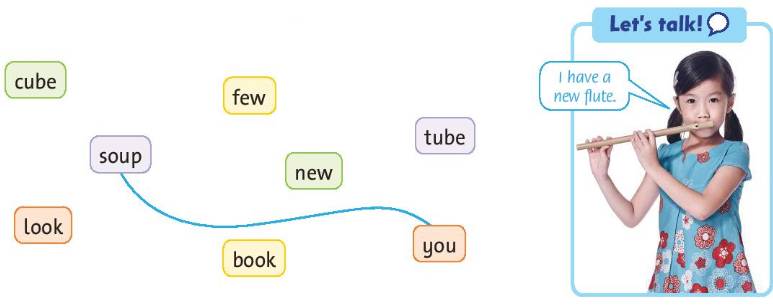
Cube - Tube
New - Few
Look - Book
You - Soup
Look, complete and match.
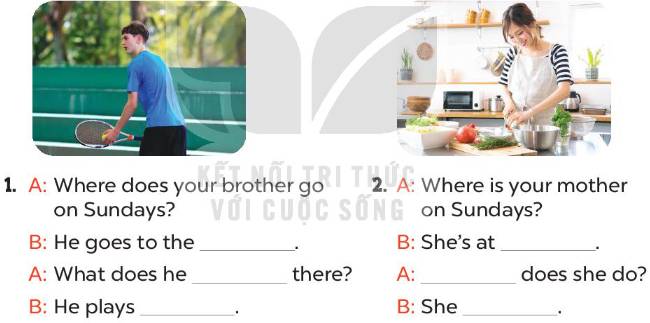
1.
A: Where does your brother go on Sundays? (Anh bạn đi đâu vào Chủ Nhật?)
B: He goes to the sport centre. (Anh ấy đi đến trung tâm thể thao.)
A: What does he do there? (Anh ấy làm gì ở đấy?)
B: He plays tennis. (Anh ấy chơi quần vợt.)
2.
A: Where is your mother on Sundays? (Mẹ của bạn ở đâu vào chủ nhật?)
B: She's at kitchen. (Bà ấy ở trong bếp.)
A: What does she do? (Bà ấy làm gì ở đấy?)
B: She cooks a meal. (Bà ấy nấu một bữa ăn.)
Read the article and look at the pictures. Match the underlined words in the article with pictures 1-4.
A gut feeling?
Emotions do not just occur in your mind; they also have a physical effect on your body. A group of scientists from Finland decided to find out which emotions affect which parts of the body. They asked 701 volunteers to colour in silhouettes in response to emotional words, stories and videos. The results show that the people generally experience emotions like anger, envy and shame in similar ways.
For example, when you're angry, you probably feel that anger mostly in your chest and head. But if you feel ashamed, you probably notice it in your face and, in particular, your cheeks. Depression makes your whole body feel less active, whereas happiness affects your whole body in a positive way.
'Hot' colours like yellow and red show an increase in activity, while blue shows the opposite. Black is neutral.
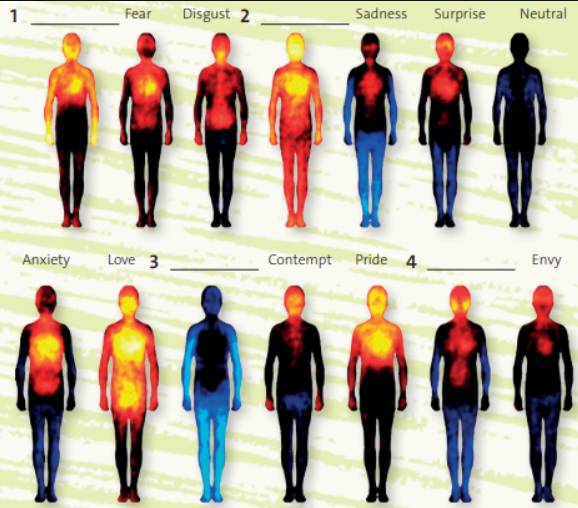
1. anger (tức giận)
2. happiness (vui vẻ)
3. depression (trầm cảm)
4. shame (ngượng)
Read and match

Đáp án:
1. C |
2. A |
3. F |
4. E |
5. D |
6. G |
Read and match
Read and match.

Read and match.
